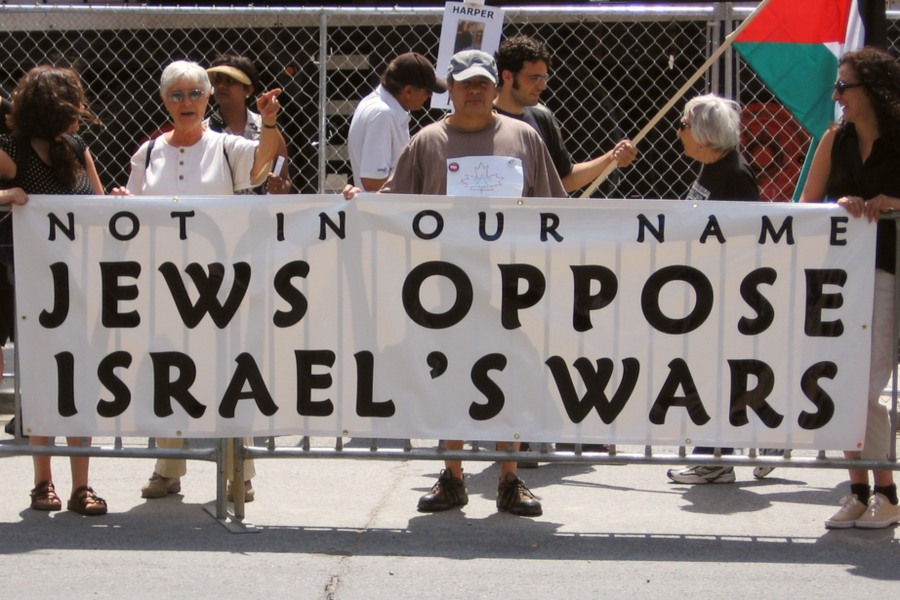Anti-Semitic hate crimes are on the rise in Britain and across the world. We are seeing increasingly violent and even deadly attacks perpetrated by the far right against Jews. And yet we are led to believe that the biggest danger to Jews is from the left.
According to three Jewish newspapers in Britain, a Corbyn-led Labour government poses an “existential threat to Jewish life in this country”. Dore Gold, former director-general of Israel’s Foreign Ministry, even went so far as to say that the greatest threat to Jews worldwide “involves the name of one individual – Jeremy Corbyn”.
The issue of anti-Semitism is being cynically used by the Blairites in the Labour Party as their main weapon to attack Corbyn and the left.
This is not to say that there have been no instances of anti-Semitism in the party, nor that those responsible shouldn’t be held to account. However, the actual level of anti-Semitism in Labour has been reported as less than 0.1% of the membership.
It therefore appears that those MPs complaining about Labour’s “institutional anti-Semitism problem” are more interested in creating a problem of anti-Semitism, in order to undermine Corbyn and the left. So desperate are the right wing to tarnish the left that one right-wing Labour MP even claimed that to be anti-capitalist is to be anti-Semitic!
What is anti-Semitism?
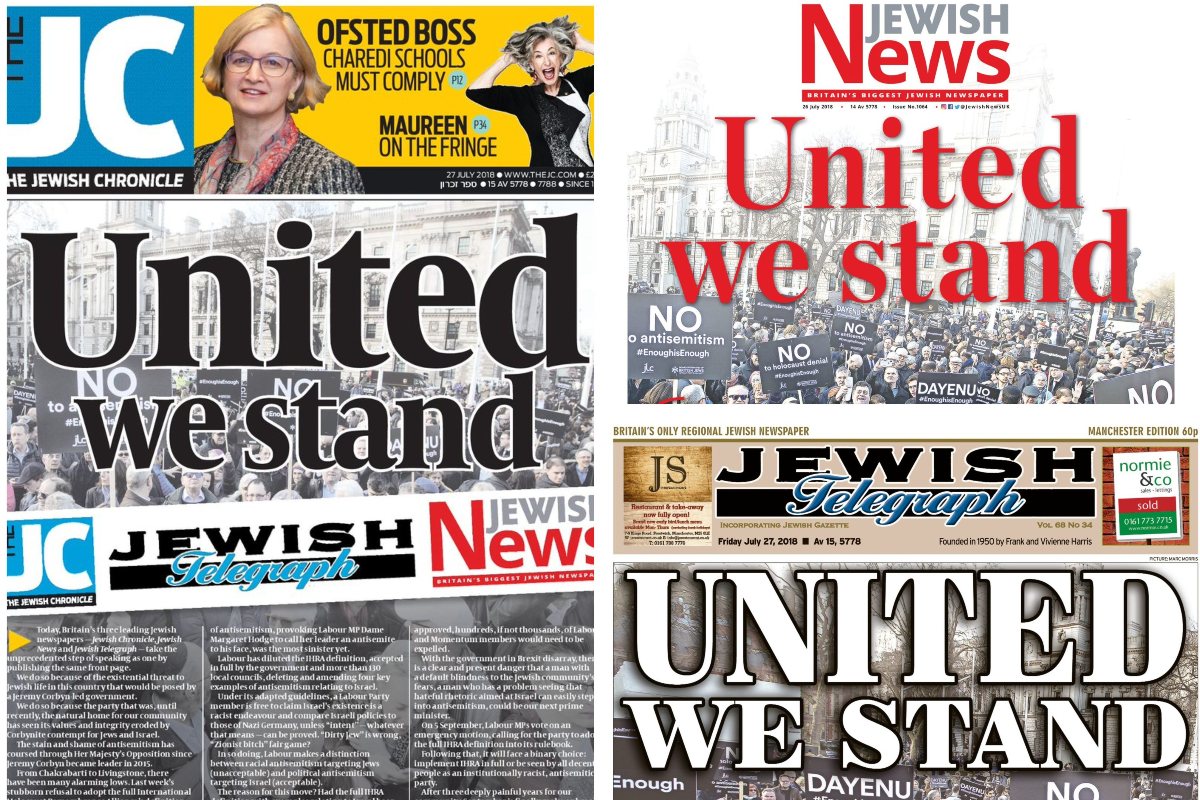 Equating criticism of Zionism with anti-Semitism is being used worldwide to attack the left / Image: fair use
Equating criticism of Zionism with anti-Semitism is being used worldwide to attack the left / Image: fair use
Anti-Semitism is usually defined as “hostility or prejudice against Jews”. This is uncontroversial. The problem is when right-wingers attempt to equate any criticism of the political project of Zionism, or of the imperialist policies and actions of the Israeli state, as anti-Semitic.
According to Ephraim Mirvis, the Chief Rabbi in the UK, Zionism cannot be separated from the faith of Judaism. According to Mirvis: “Zionism is a belief in the right to Jewish self-determination in a land that has been at the centre of the Jewish world for more than 3,000 years. One can no more separate it from Judaism than separate the City of London from Great Britain.” Hence, anyone who is anti-Zionist is apparently also anti-Semitic.
This reasoning – to equate criticism of Zionism as anti-Semitism – is being used worldwide to attack the left, and stifle solidarity for Palestine. In France, a group of lawmakers is even attempting to change the law so that anti-Zionism is made a criminal offence. It is time that the left set the record straight.
What is Zionism?
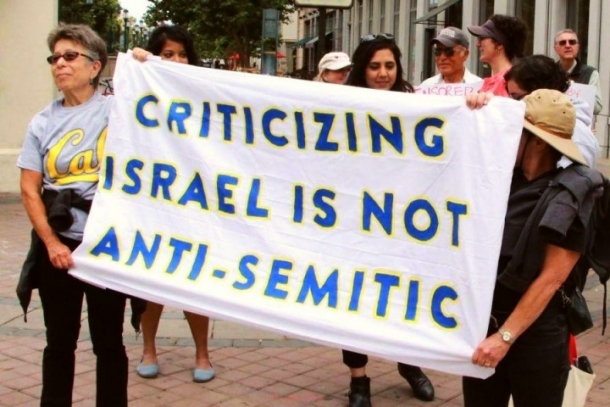 In its early days, the Zionist movement was mostly backed by wealthy Jews, as an alternative to the growing popularity of socialism / Image: Alan Denney
In its early days, the Zionist movement was mostly backed by wealthy Jews, as an alternative to the growing popularity of socialism / Image: Alan Denney
Tying Zionism intrinsically to the faith of Judaism is false. Numerous Jewish groups around the world do not identify as Zionists. Zionism as a political project only emerged in the late 19th century, with the foundation of the World Zionist Organisation by Theodor Herzl – a wealthy Austro-Hungarian journalist – in 1897.
At that time (and for centuries before), Jews across the world were suffering intense persecution. Jewish ghettos could be found in nearly every city in Europe. In Tsarist Russia, but also in other countries, Jews were subject to vicious attacks – 'pogroms' – in which Jewish neighbourhoods were burnt down, and their inhabitants massacred.
Various political movements sprung up which aimed to solve the so-called 'Jewish Question' – that is, how to emancipate Jews from this centuries-old oppression. Zionism – the establishment of a Jewish state in Palestine – was simply one of many answers to this question.
Zionism vs Socialism
In its early days, the Zionist movement attracted little support from European Jews. At that time, the Second International had mass parties, organising workers of all backgrounds in the struggle for socialism. Instead of separating working-class Jews from this struggle (as Zionism put forward), there was an instinctive yearning for the unity of all workers.
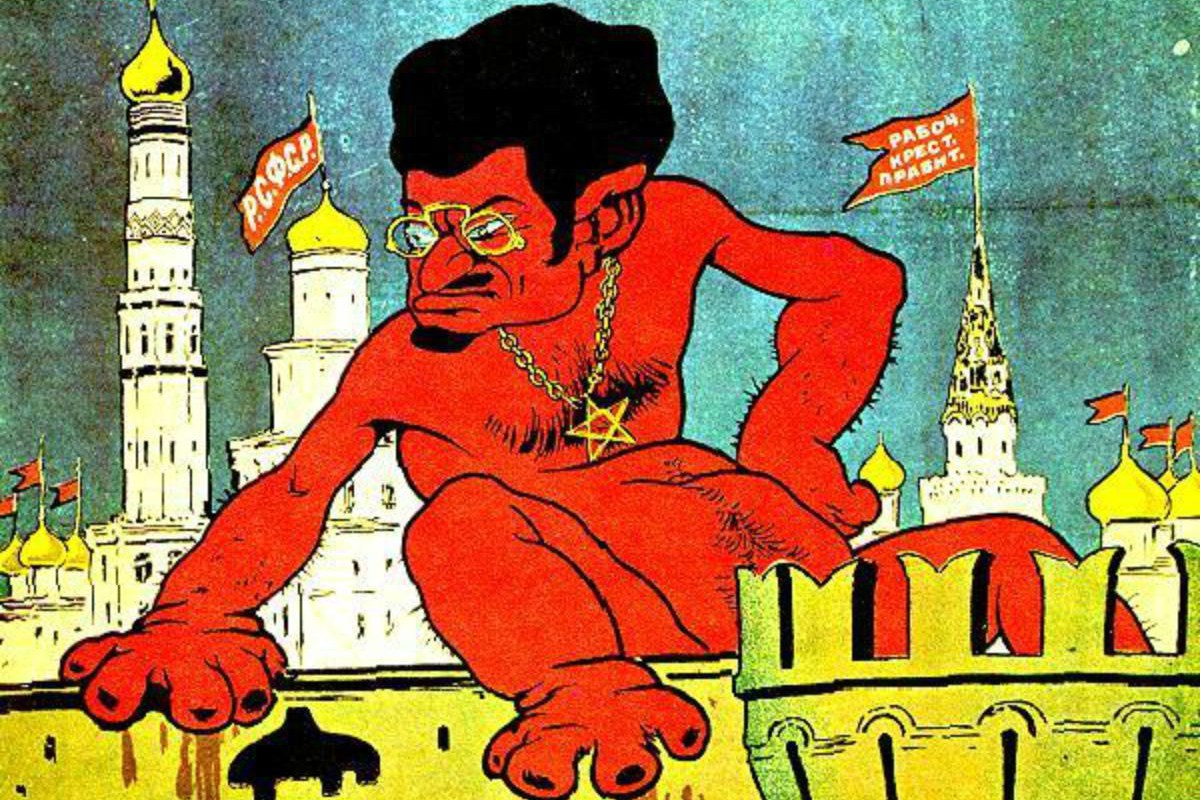 The Bolsheviks were identified with the Jewish people and their struggle, and consequently attacked and slandered by antisemites / Image: public domain
The Bolsheviks were identified with the Jewish people and their struggle, and consequently attacked and slandered by antisemites / Image: public domain
In Russia, where the oppression of Jews was particularly severe, Lenin and the Bolsheviks pointed out how anti-Semitism was whipped up by the capitalists and landlords to divide the workers’ movement. They appealed to working class Jews to unite with the whole of the working class in the socialist struggle, which included a struggle against all capitalists and landlords, including the Jewish landlords and capitalists. As a result, many of the Bolsheviks’ leading members were Jewish.
In contrast, the Zionist movement was mostly backed by wealthy Jews, as an alternative to the growing popularity of socialism. This was the case in particular for many of the ruling class in western Europe, who feared an influx of radicalised Jewish workers fleeing the pogroms of Russia.
Zionism amounted to a capitalist solution to Jewish emancipation. Rather than a social movement aimed at the elimination of class society – the root of all oppression – it sought a separatist solution along the lines of bourgeois nationalism.
Self-determination
Zionists point to the right of nations to self-determination – a right that Lenin and the Bolsheviks in Russia enthusiastically supported – to justify their approach.
Marxists have always stressed that the right to self determination is a basic democratic demand. However, whether each particular national struggle for self-determination is progressive (and therefore should be supported) depends on the concrete circumstances. Above all, a key factor is whether it would advance or hinder the cause of the working class worldwide in its struggle for socialism.
As Marxists pointed out, in the early 20th century there was no Jewish nation in the traditional sense, in that the Jewish people lacked a common territory, language, etc. Instead, Jews were scattered in towns and villages all over Europe, the Middle East and, increasingly, the Americas. Such self-determination could not be achieved simply by the Jewish people obtaining territorial independence from an oppressor nationality. It would require the mass migration of Jews into a common territory, as advocated by the Zionists.
In general, Marxists are against the setting up of new borders and divisions between workers. The straight-jacket of the nation state is one of the fundamental barriers to human development.
However, where a nation or minority group is subject to oppression, it is sometimes necessary for a workers’ state to grant independence, or at least regional autonomy, in order to prove in practice that it is against continuing such oppression.
Trotsky put forward this very possibility: of a world socialist republic creating an autonomous region for dispersed Jews who wished to be reassembled. With harmonious development on socialist lines, such divisions would ultimately be overcome.
Palestine
However, this was not the perspective of the Zionists, organised in the World Zionist Organisation. Instead of developing an unsettled region of the world in a socialist – i.e. planned – way, the region that was to become the basis for a future Jewish state was an existing homeland to hundreds of thousands of Palestinians. The “right of Jewish people to self-determination” in Palestine, was therefore predicated on denying this very right to the Palestinians.
 When Israel was founded, the “right of Jewish people to self-determination” in Palestine was predicated on denying this right to Palestinians / Image: fair use
When Israel was founded, the “right of Jewish people to self-determination” in Palestine was predicated on denying this right to Palestinians / Image: fair use
The early stage of the Zionist project was characterised by wealthy Jews buying up land in Palestine from absentee Arab landlords. The Zionists would then evict the Arab tenants and replace them with Jewish migrants. There was clearly nothing progressive about this racist policy, which only served to increase hostilities between Arabs and Jews.
It should be noted, however, that migration to Palestine by European Jews was far outstripped by migration to the USA. By 1914, the Jewish population of Palestine was 60,000 (7% of the total). By 1941 this had increased to just under 475,000 (30%). However, Jewish migration to the USA totalled over 1.75 million between the years 1900 to 1924. This fact alone demonstrates that Zionism was far from being a majority movement amongst European Jews, or that it is “inseparable” from Judaism. It was only after the Holocaust, with the horrific extermination of around six million Jews by the Nazis that the situation dramatically changed.
Tool of imperialism
From the outset, it was clear that the Zionist answer to the “Jewish Question” was no answer at all. If a Jewish state could be established in Palestine, it could only do so by violently displacing the Arab population. Such a state – lacking an advanced industrial base, and requiring a strong military – would inevitably be forced to become a tool of imperialism to survive.
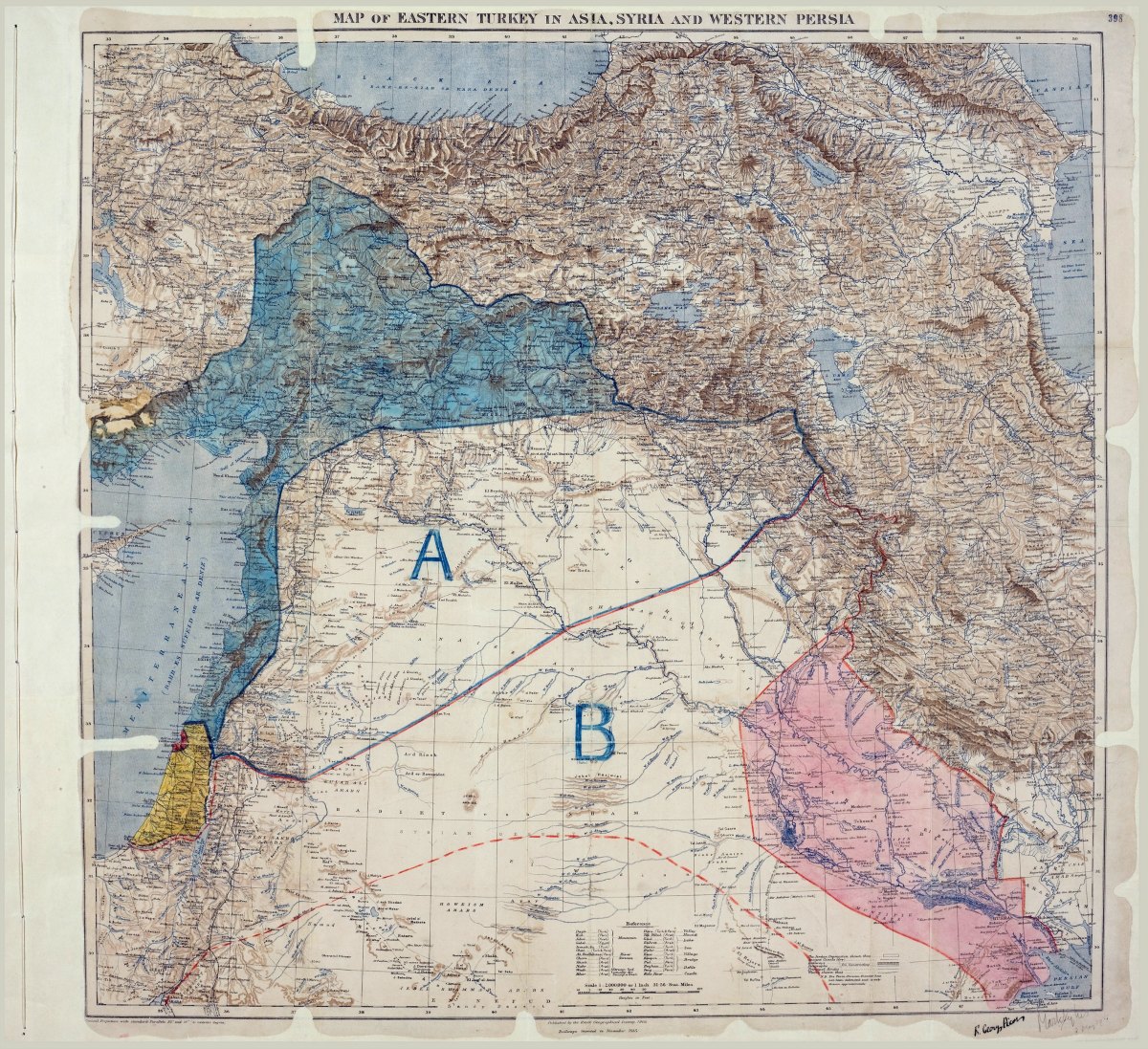 The British imperialists wanted to use the Zionists to create conflict with the Arabs, in a classic case of imperialist “divide and rule” / Image: public domain
The British imperialists wanted to use the Zionists to create conflict with the Arabs, in a classic case of imperialist “divide and rule” / Image: public domain
Indeed, the British imperialists, who had taken control of Palestine during the First World War, leaned on the Zionists in order to maintain their rule. The British first promised Palestine to the Arabs in 1914, in return for their support in the war.
Then in 1917, Lord Balfour sent a secret letter to the World Zionist Organisation’s leader, promising that Britain would use its “best endeavours” to help the establishment of a homeland for Jews in Palestine.
In reality, the British imperialists had no intention of setting up a Jewish state in Palestine. Instead, they wanted to use the Zionists to create conflict with the Arabs, in a classic case of imperialist “divide and rule”.
Trotsky would later remark in 1940:
“The attempt to solve the Jewish question through the migration of Jews to Palestine can now be seen for what it is, a tragic mockery of the Jewish people. Interested in winning the sympathies of the Arabs who are more numerous than the Jews, the British government has sharply altered its policy toward the Jews, and has actually renounced its promise to help them found their ‘own home’ in a foreign land.
“The future development of military events may well transform Palestine into a bloody trap for several hundred thousand Jews. Never was it so clear as it is today that the salvation of the Jewish people is bound up inseparably with the overthrow of the capitalist system.”
The history of the state of Israel is a confirmation of this prediction. Except that it has become a bloody trap for millions, not hundreds of thousands. Far from guaranteeing a peaceful homeland for Jews, it has entailed a near-permanent state of conflict for its inhabitants.
As predicted, the Israeli state became one of the chief pillars of western imperialism in the region – a bastion of reaction. Over 70 years since its foundation, anti-Semitism has not been abolished, either inside or outside the borders of Israel.
Oppression of Palestine
The creation of the state of Israel was a crime against the Palestinian people. During the 1947-49 Palestine war, which involved the establishment of Israel, around 700,000 Palestinian Arabs (out of a total of 900,000) fled or were expelled from their homes by the Israeli Defence Force and Jewish militias. Instead of guaranteeing stability and safety for Jews, more than 600,000 Jews were then expelled from their homes across the Middle East in response.
 The idea of a one-state solution on the basis of capitalism has long since been abandoned as a utopia / Image: fair use
The idea of a one-state solution on the basis of capitalism has long since been abandoned as a utopia / Image: fair use
The oppression of the Palestinians has continued ever since. The roughly 20% of non-Jewish Israelis face widespread discrimination as second-class citizens. The poverty rate amongst Arab-Israelis is almost 50%. Since September 2018, racism has been enshrined into the Israeli constitution, which defines Israel as the “national home of the Jewish people”.
Conditions are even worse for the millions of Palestinians living in the occupied West Bank and the Gaza Strip. Since the occupation in 1967, it is estimated that almost 50,000 Palestinian homes have been destroyed. The blockade of Gaza since 2007 has resulted in almost two million people living in what is widely described as the “world's largest open air prison”. Unemployment in the Gaza strip was officially at 52% in 2018, but exceeded 67% for the youth. Gaza has been subject to periodic bombardment by the Israeli Air Force since 2008, resulting in thousands of deaths and the destruction of much of its infrastructure.
Socialists worldwide must stand wholeheartedly with the cause of the Palestinians, for their liberation from the oppression inflicted upon them by the Israeli state. However, it is vital that we maintain a class position on the liberation of Palestine, in order not to fall into reactionary conclusions.
Which way forward?
Although Marxists opposed the creation of the state of Israel in 1948, it is impossible to rewind the clock. Since then, several generations of Jews have grown up in Israel. Regardless of whether the establishment of Israel was progressive or not, a Jewish nation now does exist in Israel, with a shared language and territory. The idea that the Jews should be “driven into the sea”, as the Palestine Liberation Organisation (PLO) demanded in the 1970s only serves to strengthen the grip of reactionary Zionism over the people of Israel.
The idea of a one-state solution has long since been abandoned as a utopia. On a capitalist basis, the Israeli ruling class has no interest in opening access to its state to millions of Palestinians. Nor are the Palestinians strong enough militarily to impose this solution.
 Only through class struggle can Jewish and Arab workers unite against their real common enemy: the capitalists of all countries / Image: fair use
Only through class struggle can Jewish and Arab workers unite against their real common enemy: the capitalists of all countries / Image: fair use
The Israeli ruling class has perfected the tactic of dividing Jewish and Arab workers within the region. A form of apartheid is practiced against Palestinians, who are subject to a whole number of racist controls. Arabs in Israel are officially second-class citizens. If the occupied Palestinian territories were incorporated into Israel on a capitalist basis, the Israeli ruling class would escalate this oppression further, rather than cede control to an Arab majority.
A two-state solution, however, is also a utopia on the basis of capitalism. As things stand, the economy of the occupied Palestinian territory is hugely dependent on Israel. The Israeli ruling class has no intention of allowing a Palestinian state – with its own police force, military, and economy – to thrive and challenge its power in the region. A capitalist Palestinian state would therefore have no real independence, and could only exist as a vassal state for either Israel or other imperialist powers. It would be unable to solve the problems of poverty and unemployment for the Palestinian masses.
Only a socialist federation of Israel and Palestine, as part of a wider socialist federation of the Middle East, offers any real way forward. With the working class in power, it would be possible to allocate autonomous regions for both the Jews and Arabs, with a shared capital in Jerusalem.
Of course, the illegal Israeli settlements in the West Bank would have to be closed down. The territory allotted to Palestinians would be greatly expanded, including into neighbouring Jordan, where 60% of the population are Palestinian. Since it would not be possible to create two completely homogenous territories, the rights of minorities in each territory would need to be protected. Yet with a socialist plan of production encompassing the whole region, cooperation between the different autonomous groups would be made possible.
Class struggle
It is often objected that a socialist solution is the greatest of all utopias. We are led to believe that Israeli Jews form one “reactionary mass” that could never unite with Arabs. This is an extremely short-sighted view, which ignores that both Israel and Palestine exist on the basis of capitalism and class society. Israel is one of the most unequal countries in the so-called 'developed' world. With high unemployment and a severe housing crisis, a feeling of intense frustration has built up amongst Israeli workers and youth below the surface of society.
It is true that the ruling classes of both Israel and Palestine cynically (and successfully) use the conflict between Jews and Arabs so as to cut across the class struggle. Yet in the final analysis, given the worldwide crisis of capitalism, they will be unable to significantly raise the living standards of the masses. The class struggle will, sooner or later, re-emerge, offering up the potential for Jewish and Arab workers to unite against their real common enemy: the capitalists of all countries.
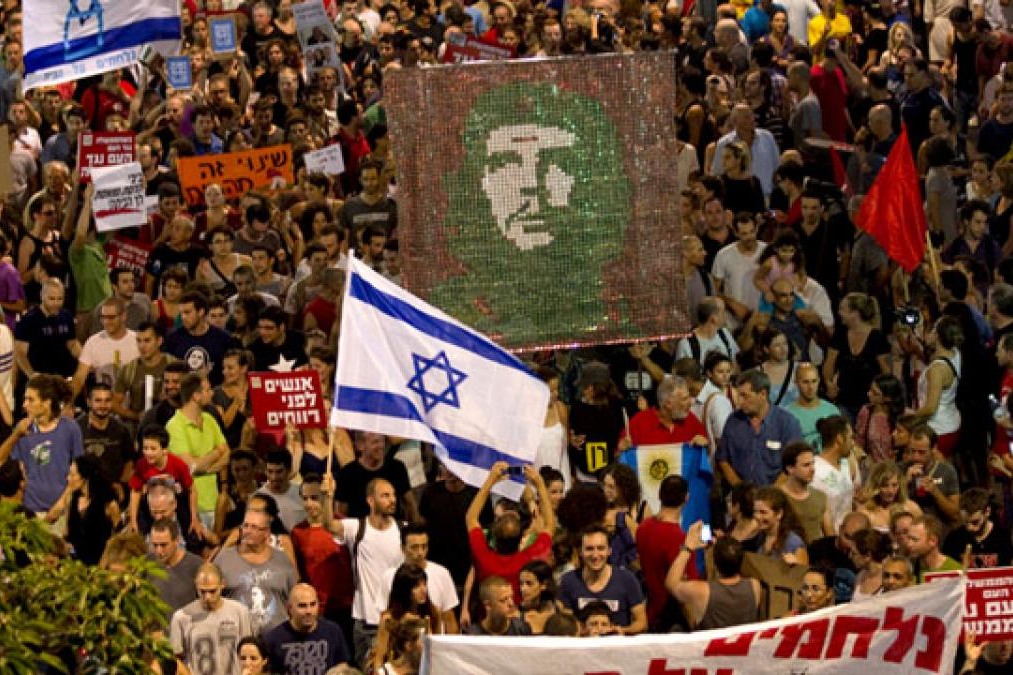 The solution to the problems of both the Jewish and Arab masses in the Middle East lies in the class struggle and socialist revolution / Image: fair use
The solution to the problems of both the Jewish and Arab masses in the Middle East lies in the class struggle and socialist revolution / Image: fair use
Such a perspective was confirmed in 2011, when an estimated 400,000 workers took to the streets across Israel, putting class demands at the fore. The movement took inspiration from the Arab Spring, with many banners proclaiming “Egypt is here”. One of the main slogans of the movement was copied from the Arab Revolutions: “the people want to overthrow the regime”.
In years to come, these events will be seen as simply the prelude to even larger struggles. More and more Jewish workers and youth will come to the conclusion that their enemies are not downtrodden Arabs, but the ruling class that exploits them all.
Zionism – the continued occupation of the Palestinian territories, and the expansion of Israeli settlements into the West Bank – will only strengthen the grip of the Israeli ruling class. To point this out is not anti-Semitic, as the proponents of Zionism would like us to believe. Instead, the solution to the problems of both the Jewish and Arab masses in the Middle East lies in the class struggle and socialist revolution.

